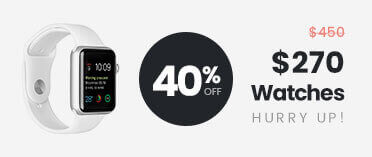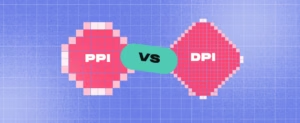How to measure a car reveal cover
Posted: April 14, 2025
How to Measure a Car Reveal Cover: A Step-by-Step Guide
A perfectly fitted car reveal cover is key to making a strong visual impression—especially during showroom unveilings or promotional events. Getting the measurements right can be a little challenging, but with the right approach, you can ensure your cover drapes flawlessly over the vehicle.
Step 1: Measuring the Width
To start, use a soft measuring tape to avoid any risk of scratching the vehicle’s paintwork. Alternatively, a piece of string can be used and then measured against a tape measure.
- Begin at the passenger side floor.
- Run the tape up over the side panels, across the roof, and down to the driver’s side floor.
- This full arc measurement gives you the total width of the cover.
Step 2: Measuring the Length
For the cover’s length, you’ll need to measure from bumper to bumper.
- Start at the front bumper floor, measure up over the bonnet, across the roof, over the tailgate, and down to the rear bumper floor.
- Be sure to follow the curve of the vehicle for an accurate measurement.
- This gives you the full longitudinal dimension of the fabric needed.
Important Note: Rounded Corners
Cars aren’t boxes—so your cover shouldn’t be either. Areas like the front wings and rear quarter panels require special attention.
- These corners should be cut with rounded edges to avoid bulky material gathering.
- For best results, use a 2–2.5 metre diameter curve to shape these corners, ensuring a smooth, tailored fit.

Digital Tools for Precision
If manual measuring isn’t ideal for you, consider a digital approach.
- Use a scaled vehicle template in design software like Adobe Illustrator.
- Map out key zones: side panels, bonnet, roof, and boot lid.
- This digital template allows for repeatability and better accuracy, particularly helpful for irregularly shaped vehicles or mass production.
Why Accurate Measurement Matters
Getting the dimensions right does more than make the cover look good:
- Complete coverage prevents exposure of any vehicle detail before the big reveal.
- Proper corner shaping avoids fabric bunching, which can ruin the sleek aesthetic.
- A well-fitted cover can be reused, making it a cost-effective solution for recurring events.
Designing for Rounded Corners
When creating artwork for your reveal cover, don’t forget the rounded corners.
- These are especially vital on the front and rear wings.
- Design your artwork with curved guidelines—use vector paths to mimic the fabric cuts.
- Matching the 2 to 2.5m diameter curve in your graphics ensures the design stays aligned when applied to the finished product.
Conclusion
Whether you’re unveiling a luxury sports car or showcasing a fleet vehicle, the fit and finish of your reveal cover speak volumes. By taking the time to measure correctly—or using digital tools to streamline the process—you can ensure your presentation is as flawless as the car itself.

How to Measure a Car Reveal Cover: A Step-by-Step Guide
A perfectly fitted car reveal cover is key to making a strong visual impression—especially during showroom unveilings or promotional events. Getting the measurements right can be a little challenging, but with the right approach, you can ensure your cover drapes flawlessly over the vehicle.
Step 1: Measuring the Width
To start, use a soft measuring tape to avoid any risk of scratching the vehicle’s paintwork. Alternatively, a piece of string can be used and then measured against a tape measure.
- Begin at the passenger side floor.
- Run the tape up over the side panels, across the roof, and down to the driver’s side floor.
- This full arc measurement gives you the total width of the cover.
Step 2: Measuring the Length
For the cover’s length, you’ll need to measure from bumper to bumper.
- Start at the front bumper floor, measure up over the bonnet, across the roof, over the tailgate, and down to the rear bumper floor.
- Be sure to follow the curve of the vehicle for an accurate measurement.
- This gives you the full longitudinal dimension of the fabric needed.
Important Note: Rounded Corners
Cars aren’t boxes—so your cover shouldn’t be either. Areas like the front wings and rear quarter panels require special attention.
- These corners should be cut with rounded edges to avoid bulky material gathering.
- For best results, use a 2–2.5 metre diameter curve to shape these corners, ensuring a smooth, tailored fit.

Digital Tools for Precision
If manual measuring isn’t ideal for you, consider a digital approach.
- Use a scaled vehicle template in design software like Adobe Illustrator.
- Map out key zones: side panels, bonnet, roof, and boot lid.
- This digital template allows for repeatability and better accuracy, particularly helpful for irregularly shaped vehicles or mass production.
Why Accurate Measurement Matters
Getting the dimensions right does more than make the cover look good:
- Complete coverage prevents exposure of any vehicle detail before the big reveal.
- Proper corner shaping avoids fabric bunching, which can ruin the sleek aesthetic.
- A well-fitted cover can be reused, making it a cost-effective solution for recurring events.
Designing for Rounded Corners
When creating artwork for your reveal cover, don’t forget the rounded corners.
- These are especially vital on the front and rear wings.
- Design your artwork with curved guidelines—use vector paths to mimic the fabric cuts.
- Matching the 2 to 2.5m diameter curve in your graphics ensures the design stays aligned when applied to the finished product.
Conclusion
Whether you’re unveiling a luxury sports car or showcasing a fleet vehicle, the fit and finish of your reveal cover speak volumes. By taking the time to measure correctly—or using digital tools to streamline the process—you can ensure your presentation is as flawless as the car itself.








